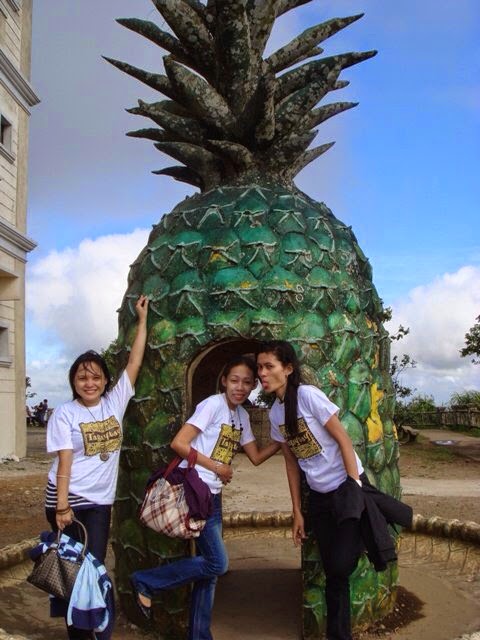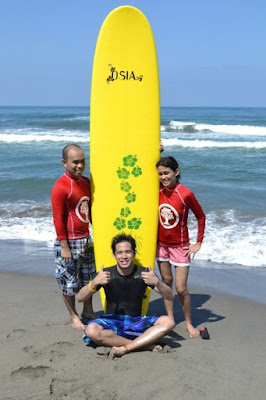Welcome
to Travel+Experiment!
Private car
By Van or FX
1. Peoples Park
Address: Tagaytay-Nasugbu Highway, Tagaytay, Cavite, Philippines
Sky Ranch Operating Hours:
Monday to Thursday: 3:00 PM to 12:00 AM
Friday to Sunday: 12:00 PM to 12:00 AM
Nessi Coaster: 50.00 pesos
Red Baron: 50.00 pesos
Wonder Flight: 50.00 pesos
Mini-Viking: 50.00 pesos
Express Train: 50.00 pesos
Super Viking: 50.00 pesos
Sky Eye (Ferris Wheel Ride):150.00 pesos
Carousel: 50.00 pesos
Ferris Wheel Ride rate: 150.00 pesos for 10 minutes
3. Picnic Grove
Address: Tagaytay Picnic Grove Complex, Barangay Sungay East-End, Cavite, Philippines.
Car/Van: 35.00 pesos
Jeepney: 50.00 pesos
Bus: 100.00 pesos
Tagaytay Zipline Rates and Souvenir Prices:
Weekend and Holiday rate: 300.00 pesos/person one-way, 400.00 pesos/person two way trips
Horseback Riding: 150.00-200.00 pesos
4. Sonya’s Garden
Address: Barangay Buck Estate, Alfonso, Cavite, 4123, Philippines
Open Daily: 8:00 AM to 7:00 PM
6. Taal volcanpo and the Crater Lake
Address: Taal, Batangas, Philippines
Address: Aguinaldo Highway, Tagaytay CityPhilippines
9. Bag
of Beans Café and Restaurant
The
city of Tagaytay is a favorite tourist attraction among local and foreign
visitors. The cool climate provided by its high altitude location and several
tourist establishments caters food and accommodations. Tagaytay overlooks Taal Lake in Batangas, the ridge provides
a spectacular view of Taal Volcano in the middle of the lake. The climate has
made the city ideal for sports, picnics, conferences, honeymoons, country
homes, and spiritual retreats. Tagaytay is 2,100 ft. above sea level and is the
highest point in Cavite.
Tagaytay
activities and attractions must see.
Destination:
Introducing Tagaytay!
Tagaytay
City is located fifty-five kilometers (34 miles) south of Metro Manila and the
drive will take roughly 2-3 hours depending on traffic. If you are not driving
a car, you can get around Tagaytay via jeepney for 15.00 pesos per ride.
By
Bus
There
are available buses going to Tagaytay. You may go to bus terminals serving the
Tagaytay-Nasugbu route; Araneta Cubao Terminal, EDSA-Taft Bus Terminal,
Baclaran and Uniwide Coastal Mall in Pasay City. Drivers tend to wait thirty
minutes for passengers before they depart. This usually takes 1 - 1.5 hours
travel time. The bus trip starts from 3:30 AM to 11:00 PM and a one-way ticket
will cost around 120.00+/- pesos. Jeepneys that ply from Cavite (Imus,
Dasmarinas, Silang) to Nasugbu, Batangas also pass by Tagaytay via the
Aguinaldo Highway.
Private car
Driving
to Tagaytay City with the family or with friends via private car is easily
accessible. Drive through from Manila via the South Luzon Expressway exiting at
Santa Rosa then via Santa Rosa-Tagaytay Road.
From there, it’s a straight drive to Tagaytay City. It can also be
reached via the Coastal Road Expressway and then taking Aguinaldo Highway heading south towards Tagaytay. You may also directly visit to People’s Park, Picnic Grove,
or in Taal Vista for picture taking the Taal Volcano. This usually takes 1 -
1.5 hours travel time.
By Van or FX
You
may also take a van or FX for a faster time travel. There are different terminals
that are located within the city. You may find these at the EGI Mall near
the LRT Gil Puyat Station (Taft Avenue cor. Buendia, 6:00 AM to 8:00 PM), StarMall
Mandaluyong (EDSA cor. Shaw Blvd.), Metropoint Mall at Edsa Rotunda and at the back
of McDonald’s at the Edsa-Taft MRT Station. This usually takes 1 - 1.5 hours
travel time and a one-way ticket will cost around 180.00+/- pesos.
I. Tagaytay Tour
1. Peoples Park
Address: Mt. Sungay, Brgy. Dapdap
East, Tagaytay, Cavite, Philippines
Entrance Fee: 30.00 pesos
Parking Fee: 20.00 pesos
Open Hours: 9:00 AM to 6:30 PM
Entrance Fee: 30.00 pesos
Parking Fee: 20.00 pesos
Open Hours: 9:00 AM to 6:30 PM
The
people’s park is a government owned park and unfortunately it is not well
maintained. The park is not clean, dilapidated place and is not safe as the
fences are rusty and lack of warning signage (DATE). It stands on a 4,516 square
metres (48,610 sq ft) of solid ground and overlooks four bodies of
water – Taal Lake, Balayan Bay, Laguna de Bay and Manila Bay - including nearby
mountains. There were some stalls where you could buy foods, drinks and
souvenirs. I recommend buying T-shirt for a souvenir and don’t forget to haggle
for the price.
The
unfinished presidential vacation palace is incomplete due to ousting of the
late president Marcos can be located here. It was to serve as a guest house for
then U.S. President Ronald Reagan who was to visit the Philippines but the
palace was never completed.
The
only way to go there if you don’t have your own car is to first ride a jeep to
Olivares’ jeepney terminal (8.00 pesos) and board another jeep to People’s Park
(10.00 pesos) or by tricycle (80.00 pesos). All the cars need to park outside the
People’s Park gate. You may ride a jeepney from the gate going to the view deck.
You may also start walking from the gate going to the top for a good exercise
but it’s quite a bit far.
2. Sky
Fun RidesAddress: Tagaytay-Nasugbu Highway, Tagaytay, Cavite, Philippines
Sky Ranch Operating Hours:
Monday to Thursday: 3:00 PM to 12:00 AM
Friday to Sunday: 12:00 PM to 12:00 AM
Sky
Fun is an amusement park in Aguindaldo Highway, Tagaytay City which opened in
March 2013. It was located inside Sky Ranch, a property was owned by SM
Investments Corporation's subsidiary SM Land commercial property division (later
merged with SM Prime Holdings), and it's also were several shops and
restaurants are located. It includes such kiosks, rides, and the Sky Eye, which
is currently the tallest Ferris wheel in the Philippines at 63 m
(207 ft) with 32 gondolas.
Tagaytay Sky Ranch Ticket Prices/RidesNessi Coaster: 50.00 pesos
Red Baron: 50.00 pesos
Wonder Flight: 50.00 pesos
Mini-Viking: 50.00 pesos
Express Train: 50.00 pesos
Super Viking: 50.00 pesos
Sky Eye (Ferris Wheel Ride):150.00 pesos
Carousel: 50.00 pesos
Sky ranch entrance fee/Admission rates: 100.00 pesos
Horseback riding rate (children/Adult): 250.00 pesos for 30
minutesFerris Wheel Ride rate: 150.00 pesos for 10 minutes
3. Picnic Grove
Address: Tagaytay Picnic Grove Complex, Barangay Sungay East-End, Cavite, Philippines.
Open Daily: 9:00 AM to 6:00 PM
This
picnic grove is a wide park with a view of the Taal volcano. Families and
friends can go on picnic, take a stroll around the mini park or just enjoy the
view while sharing a picnic with family and friends. There are a lot of
activities that this place offers such as horseback riding, an eco-trail
boardwalk, a zipline
and cable cars.
Tagaytay Zipline and Cable Car and Tagaytay Picnic Grove are owned and managed by a separate company.
Height: 300 feet
Length: 250 meters
Picnic Grove Entrance Fee: 50.00 pesos
Parking
Fees: Tagaytay Zipline and Cable Car and Tagaytay Picnic Grove are owned and managed by a separate company.
Height: 300 feet
Length: 250 meters
Picnic Grove Entrance Fee: 50.00 pesos
Car/Van: 35.00 pesos
Jeepney: 50.00 pesos
Bus: 100.00 pesos
Tagaytay Zipline Rates and Souvenir Prices:
Weekend and Holiday rate: 300.00 pesos/person one-way, 400.00 pesos/person two way trips
Horseback Riding: 150.00-200.00 pesos
4. Sonya’s Garden
Address: Barangay Buck Estate, Alfonso, Cavite, 4123, Philippines
Open Daily: 8:00 AM to 7:00 PM
Sonya’s
Garden is 30 minutes away from the city of Tagaytay. It offers simple eat all
you can buffet for 610.00 pesos per person. They served freshly harvested green
leafy salads, fresh fruits in season, freshly squeezed dalandan juice freshly
harvested from the garden, pasta and dessert. They have also the best freshly
baked sesame bread, cheese hopia, pan de coco, etc. from their own bakeshop. A
price of the bread starts 80.00 pesos depending on what you like. They also
sell honey, herb plants, and scented soap.
6. Taal volcanpo and the Crater Lake
Address: Taal, Batangas, Philippines
Taal
volcano is one of the most active volcanoes in the Philippines and has produced
some of its most powerful historical eruptions. Six of 24 known eruptions at
Taal since 1572 have caused fatalities, many from tsunamis in the Crater Lake. Taal
is today one of the most closely monitored volcanoes in the region. An increase
in seismic activity under Taal was recorded in November 2006, followed by an
increase in hot water springs in the crater in April 2007.
The
entire Tagaytay ridge is the crater's edge and the Taal Lake is the caldera of
the volcano. The Taal caldera is largely filled by Lake Taal, whose 267 sq km
surface lies only 3m above sea level. The maximum depth of the lake is 160m. The
lake's water is a diluted form of sulphuric acid with high concentration of
boron, magnesium, aluminium and sodium in salt form. Its average depth measures
20m. Swimming is allowed in the lake.
Having
a tour on Taal Volcano is only possible when the alert level is below 2. Tourist
can also climb and experience the adventure going to the Crater Lake. From the
Tagaytay ridge in Cavite, with its amazing views of Taal Lake, and Taal volcano
in the distance you can take a tricycle ride (50.00 pesos) adjacent to Tagaytay
Rotunda (this is a very steep road);going to the shore of the village of Talisay,
Batangas. Talisay is the major hub where boats are available to reach the volcano
island. At the lake, you will take the motorboat for 30 minutes ride across the
lake going to the Volcano Island.
The
local tour guide will lead the trek and also you’ll enjoy a horse ride going to
and from Crater View for 20 minutes. The price is 500.00 pesos per person for 2
km horse ride. The views of the Crater Lake and its surroundings area are
breathtaking and definitely worthy of the hike. You will pass also the volcanic
steam vents before reaching the summit.
It
is suggested that you wear comfortable walking shoes, hat to shield your head
from the sun, sunblock, drinking water, extra clothes for changing, and some
cash for your lunch after the trek from Taal Volcano.
7. Taal
Vista Hotel Picture taking
Address: Tagaytay,
Cavite Philippines
Taal Vista Hotel is the preferred hotel in
the area considering its picturesque sights, clean, and cool mountain air. You
may also enjoy dining in the excellent cuisine at Café Veranda which is open
daily from 6:00 AM to 10:00 PM. You can indulge in a variety of Continental and
Filipino dishes while enjoying the gentle afternoon breeze and panoramic view
of the Taal Volcano.
8. Eating
Bulalo
Tower
Ground BulalohanAddress: Aguinaldo Highway, Tagaytay CityPhilippines
Many
restaurants in Tagaytay offer a lot of dining places and serve when it comes to
Bulalo. Tower Ground is the bulalohan of choice for a lot of Tagaytay visitors
as the ambiance is romantic and offers a view of the Taal Lake. Their bulalo is
served in a hot pot with vegetables. You can smell the aroma of the beef and serving
size is perfect to share with family.
It
is open daily from 8:00 AM until 6:00 PM. A pot of bulalo costs 400.00 pesos are
good for sharing between two to three people and they have a lot of food choices
from grilled and sizzling menu.
This
café is famous for their shepherd’s pie (125.00 pesos), steak and mushroom pie
(130.00 pesos), apple pie (95.00 pesos) or blueberry cheesecake (135.00 pesos),
coffee (110.00 pesos). Their barbecue ribs, fish and chips, and other main
courses are also popular. The place can be quite packed during weekends so
service might take some time, but the food is definitely well worth the wait.
Happy
Travels!
Don't
just keep this to yourself. SHARE!

.JPG)














.JPG)











.JPG)
.JPG)





















